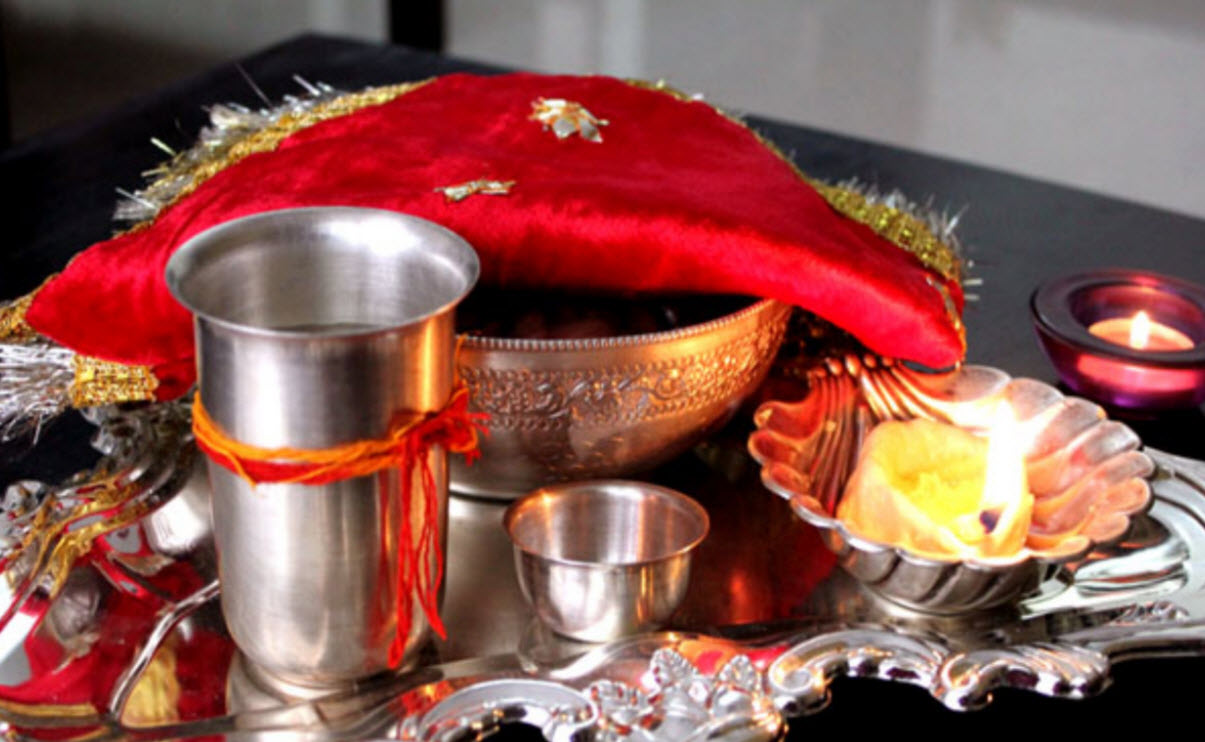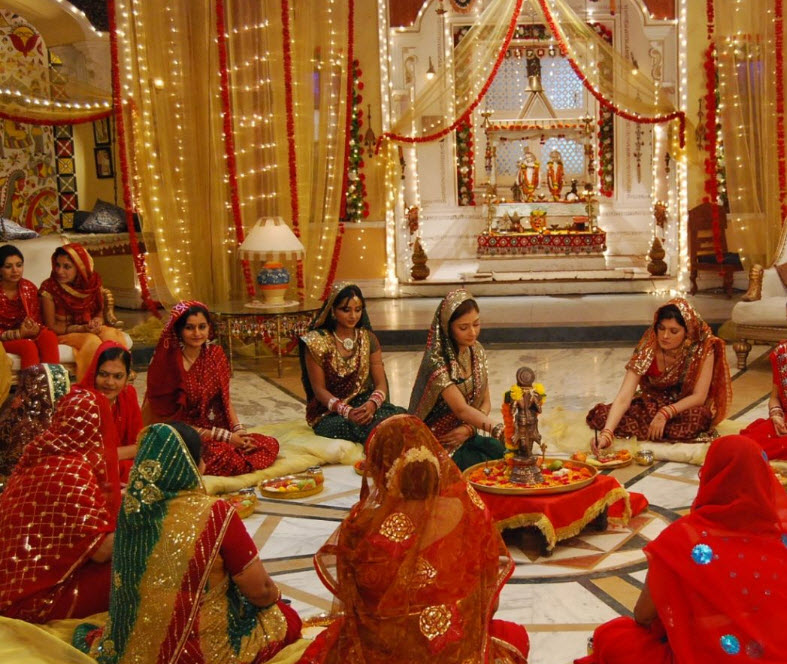About Us
Advertise With Us
RSS Feed | Content Syndication
Terms & Conditions
Privacy Policy
Contact Us
BollywoodShaadis.com © 2025, Red Hot Web Gems (I) Pvt Ltd, All Rights Reserved.

Like all other Hindu festivals, Karwa Chauth is celebrated with great joy, happiness and enthusiasm. No stone is left unturned when it comes to celebrating this festival. Families unite as one, on this day and women break their fast together, on the appearance of the shining moon. However, what most of us know about Karwa Chauth, is through what we see in Bollywood films. The women fast for a day for the health and well-being of their husbands.
But, is it really as grand and lavish as they show it to be in films? Or is it a simpler, more close-knit function? What are the age-old traditions and rituals that are associated with Karwa Chauth? Have you wondered about these questions? Well, you will now have all the answers. Scroll down to read about the rituals of this beautiful festival, Karwa Chauth.

This function does not merely start on the day itself. It all begins a day before! All married women and brides-to-be receive the traditional sargi from their in-laws’ house, prepared by their mother-in-law. The sargi includes earthen pots that contain food to be eaten in the morning, before starting the fast as it will give the fasting ladies the strength they will require for the rest of the day.
This food has to be consumed in the morning, before sunrise. It includes fruits, mathri which is a salty fried snack, milk-based Indian sweets or mithai and dry fruits like kaju, kismis and badam.

The baya is a gift or a token of the mother-in-law’s appreciation for her daughter-in-law, who is fasting for her son. Baya generally includes money, clothes, jewellery, cosmetics, sindoor and sweets. After receiving the baya, women dress up in bright clothes and apply mehendi on their hands and feet, which symbolise a married Indian woman, in our culture. If the woman is newly-married and it is her first Karwa Chauth, gifts are given to the boy’s side of the family, by the girl’s side. This can include jewellery, money, clothes, sweets and more.
Continue reading below

Moreover, for newlyweds, the first Karwa Chauth is the time when a special bond develops between the mother-in-law and the daughter-in-law. Some mothers-in-law allow their daughters-in-law to have tea or milk in the evening, after the evening puja. In this way, a mutual understanding and a token of respect is set early on.
Also Read: The Story Behind Why Karva Chauth Is Celebrated By Indian Women And Why They Dress Up For The Fast

In the evening, fasting women get together to perform the puja. The area where the puja will take place is decorated with a beautiful idol of Maa Parvati and kharia mitti or mud.
A few hours before the moon rises, the traditional story of Karwa Chauth is narrated to all married women. Legends say that many, many years ago, a young woman named Veeravati broke her fast before spotting the moon as a result of which her husband died instantly.
Distraught, the woman prayed to Maa Parvati, beseeching her to bring her husband back to life. This was done only after the woman had followed a religious cycle of seven Karwa Chauth, after which her husband was restored to life.
After the narration of this story, a prayer is said for the purpose of the husband’s welfare and for marital bliss and harmony. Lastly, the women pass their thalis around in a circle or feris, as they chant their holy hymn.

When the moon rises in the sky, it is time to break the fast. Women begin lighting diyas and pour water into the karwa or container, which is already on the thali. Placing a sieve (Chaalani) on this traditional thali, the women go up to the terrace or anywhere from where they can clearly see the moon.
First, they see the moon through the sieve. Then, water is offered to the moon. After that, they look at their husbands through the same sieve. A prayer is said asking for the husband’s long life and then, the husband breaks his wife’s fast by feeding her a morsel of food or by making her drink a sip of water.

This is followed by a lavish and delicious meal. Sometimes, the husbands give their wives gifts too.
Karwa Chauth is one of those festivals that is both selfless by nature as well as a great joy to celebrate. Isn’t this festival sweet and beautiful? Indian culture is really rich and steeped in values and customs.
Next Read: Latest And Trending 'Mehendi' Designs, Fasting Ladies Can Flaunt On Karwa Chauth
advertisement
advertisement
advertisement
